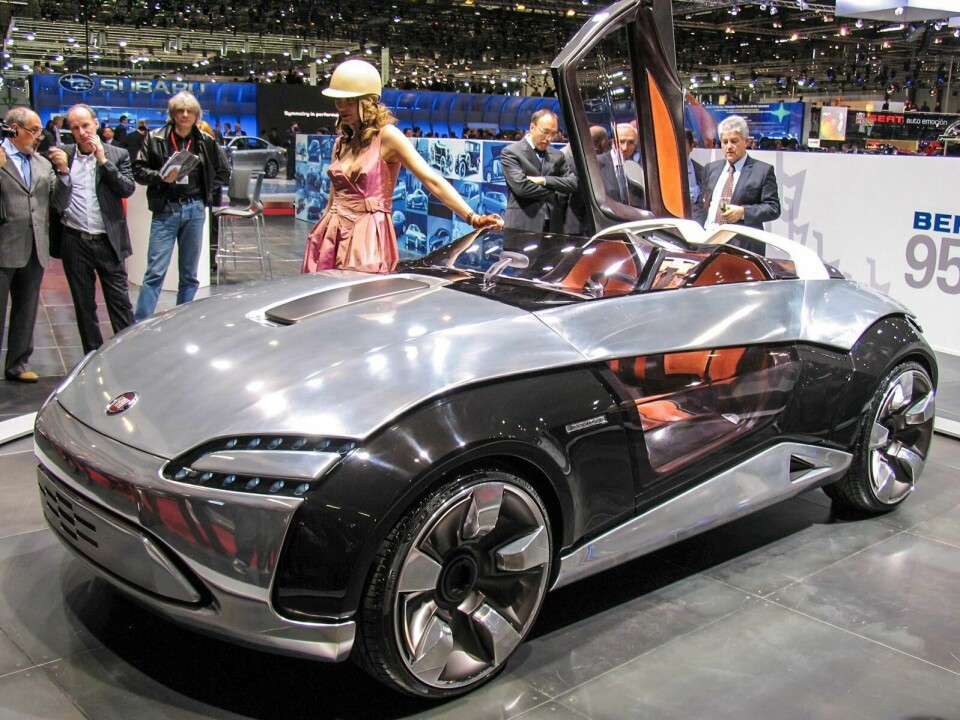
Fiat Bertone Barchetta (2007)
Bertone’s 95th anniversary car that celebrated one of the Italian greats
To celebrate its 95th birthday, Bertone decided to revisit one of its defining creations: Nuccio Bertone’s 1947 Barchetta. Built on a FIAT 500 chassis, the tiny little sports car was made of aluminium and was Bertone’s personal racer.
The Barchetta – Italian for little boat – also helped define its namesake format, as it was light weight, stripped down, tuned for racing, and eschewed the niceties of the everyday driving experience, like a full windscreen, any weather protection, and, on occasion, the doors as well.

For its anniversary revisit of the car, Bertone returned once again to Fiat’s smallest car at the time: the Panda. Once again a barchetta-type roadster was envisioned, albeit just a bit more upscale. The finished product was a gleaming aluminium and composite-bodied roadster which had a profile reminiscent of the original car.

The exterior of the Bertone Barchetta was made of two aluminium shells that enclosed a body made of composite materials. At the doors, which swung in a reverse scissor fashion, the composite was replaced with a smoked glass, which allowed a certain amount of transparency on the side of the car. The unique hinging mechanism, which swung over the rear wheel, was a Bertone patent.

For all the drama of the doors, it was the aluminium shells that showed the craftsmanship for which Bertone was famous. The body was created using traditional techniques, hand-beaten and polished into shape. The upper shell was a giant one-piece exoskeleton, that gave the shells the appearance of a suit of armour encasing the roadster body.

The rear of the car had the round rump and short overhang of a classic roadster, and a small trunk was located under a leather panel (embossed with the Bertone b) on the rear deck. Rear lights, as well as headlights, were LEDs, although their design impact is minimal, it was the sculpted cutouts in the aluminium exoskeleton that provided the primary down-the-road graphics.

The cabin was defined by the wraparound half-windscreen at the front and sides, and the rear roll bar. Two leather seats were sculpted into the bodyshell of the car. The squared-off steering wheel, the IP and the throttle and other controls are adjustable, to customise the driving experience.

At the IP, an array of old school analogue gauges faced the driver, as did a couple of ventilation ports with the fans prominently displayed. Floating between the IP and centre console was a blocky gearshift machined from a solid billet of aluminium. The entire ensemble not only referenced the original Barchetta, but also had a strong dieselpunk sensibility; one that, of course, is reinforced by the aluminium exoskeleton wrapping the exterior.

The Bertone Barchetta was introduced at the 2007 Geneva Motor Show, and was displayed next to the original Barchetta. The original seemed a purer expression of Barchetta form, with the design simplicity of a child’s pedal car; the latter-day Barchetta seeming more fussy by comparison.

But, in reality, the newer Barchetta had more in common with a modern roadster, and of course, was built over the lowly front-drive Panda chassis. It was a piece of dieselpunk-inspired sporty fun, one that makes us wish it were not just a one-off birthday present, but a preview of better days ahead for a storied carrozzeria, now sadly passed into the history books.




